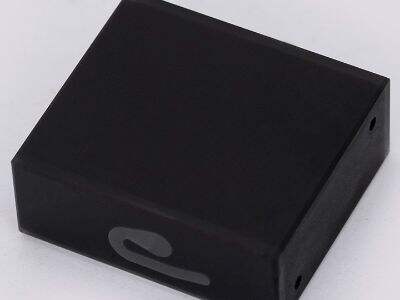Importanza tal-UV cuvettes fis-spettrofotometrija
Kontenituri plastici żgħar, rettangolari li jżommu kampjuni likwidi biex jiġu analizzati f'spettrofotometru. Huma tipikament magħmulin minn kwartz jew plastik. Il-cuvette tippermetti l-illuminazzjoni li tintuża permezz ta' kampjun sabiħ spektrofotometru jista' jiddetermina kemm ta' dawl assorbit jew trasmess. Dawk id-dejta tippermetti lis-sijentifiċi janalizzaw il-proprjetajiet tal-kampjun - il-konċentrazzjoni tagħha, il-purità tagħha.
Fatturi li jkunu jmejjin meta tagħżel UV cuvette għall-spektrofotometru tiegħek
Jeżistu ftit ċose li jridu jitqiesu meta tagħżel kuwetta UV. Bʼassolut, inti jkollok bżonn tikkunsidra l-materjal tal-kuwetta 808nm. Il-kuwettiet UV, tal-quartz huma iktar resistenti u tolleranti għall-temperatura. Il-kuwettiet tal-plastik huma iktar bil-fatt, madankollu, jistgħu ma jkunuxx kompatibbli ma' kollha t-tipi ta' kampjuni.
Inti tista' tixtieq tikkunsidra l-lum tad-distanza għall-kuwetta wkoll. It-triq tal-lum hija l-bidu fejn il-mogħdija ottika tad-dawl tagħdud minn fuq il-kampjun. Truq iktar twil jipprovdu sentitività iktar għall-spektrofotometru, u iktar faċli li tidentifika t-tagħmir fil-kampjun. Madankollu, il-truq iktar twil jfisseru iktar kampjun, li jkolli fuq id-detettur.
Il-grandura u l-forma tal-kuvetta huma apparti sostenjali. Jekk jogħġb, innota li xi spettrofotometri huma ddisejnjati madwar ċerti granduri tal-kuvetta, allura tibda ċert li tagħżel il-kuvetta tajba għall-spettrofotometru tiegħek. Apparti hekk, inti se tlaħaq li hemm esperimenti fejn biex tikseb riżultati spettrali ottimali inti tibda bżonn taħdem b'kuvettes b'formoli partikolari, pereżempju kuvettes mikro għal ħafna volumi żgħar.
Paragun bejn kwartz kontra kuvettes plastiki għal qari UV
Imkejjla UV jinkisef ukoll f'kuvettes ta' kwartz minħabba li dawn huma trasparenti għall-ilma UV. Dan huwa kritiku biex titkejjel korrettament il-kampjuni li jew jassorbon jew jittrasmittu fil-famma UV. Jekk tużaw kuvettes plastiki, l-UV jista' jinkiseb, li jwassal għal riżultati mhux eżatti. Barra minn hekk, il-kuvettes tal-kwartz għandhom ir-riżistenza aħjar għall-kaġunijiet u jistgħu jitnixxew b'serje iktar estiża ta' solventi.
Kif tibda tiftak u tnixxi l-kuvettes UV tiegħek biex tipproduċi riżultati ripetuti
Biex tikseb qari ta' affidabilità mitluk tiegħu, essenzjali li tibda attenzjoni mal-maniutenzjoni u n-nitrità tal- Cuvette uv . Innetja l-kjubett b'solventi appropjati wara l-użu biex tneħħi l-materiali li jibqgħu. Mhux tixrob l-kjubett peress li dan jikkompli l-accuratezza tal-miħuri tiegħu.
Għal-makjubiet iktar sporri, inqos il-kjubett f'soluzzjoni tat-tidwib jew innetja mal-intern b'brusha għall-kjubetti. Assigur li tixrof il-kjubett sew bil-majjta distillata wara l-użu. Iażż il-kjubett fi post iktar pulit u asciutt biex tevitja kontaminazzjoni.
Ottimizzazzjoni tal-prestazzjoni tal-spektrofotometru tiegħu billi tagħar l-ittest li UV huwa meqjus
L-isħir tar-riljanti Kuvettija uv huwa kritiku għall-prestazzjoni ottimali tal-spektrofotometru tiegħu. Tista' tisib riżulati eıšati u riproducibbli billi tagħar kjubett li jiddevi għall-istrument tiegħu u għall-tip ta' kampjun tiegħu. Il-maniutenzjoni regolari bħala washu ta' maniutenzjoni tal-kjubetti wkoll tibdi l-affidabilità tal-esperimenti tiegħu.
Tabella tal- Kontenut
- Importanza tal-UV cuvettes fis-spettrofotometrija
- Fatturi li jkunu jmejjin meta tagħżel UV cuvette għall-spektrofotometru tiegħek
- Paragun bejn kwartz kontra kuvettes plastiki għal qari UV
- Kif tibda tiftak u tnixxi l-kuvettes UV tiegħek biex tipproduċi riżultati ripetuti
- Ottimizzazzjoni tal-prestazzjoni tal-spektrofotometru tiegħu billi tagħar l-ittest li UV huwa meqjus
 EN
EN
 AR
AR
 BG
BG
 HR
HR
 CS
CS
 DA
DA
 NL
NL
 FI
FI
 FR
FR
 DE
DE
 EL
EL
 HI
HI
 IT
IT
 JA
JA
 KO
KO
 NO
NO
 PL
PL
 PT
PT
 RO
RO
 RU
RU
 ES
ES
 SV
SV
 TL
TL
 ID
ID
 LV
LV
 SR
SR
 SK
SK
 UK
UK
 VI
VI
 HU
HU
 MT
MT
 TH
TH
 TR
TR
 FA
FA
 AF
AF
 MS
MS
 GA
GA
 IS
IS
 LA
LA
 KK
KK







